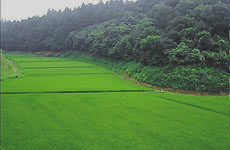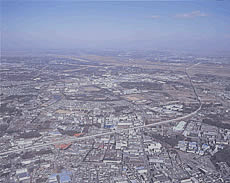Hokkaido Toyako Summit
Venues

Chiba has been nourishing lives and cultures of people since the prehistorical era, backed by satoyama and satoumi, or forested hills and coastal sea that people tenderly interacted with as the sustainable environment. Still today, more than 29,000 ancient ruins exist in Chiba, the largest number among prefectures in Japan. These sites in Chiba include relics from the Paleolithic era of about 30,000 years ago, kitchen middens of the Jomon Era of some 10,000 years ago, as well as ancient tombs and ruins of castles. In old days Chiba was called Fusa no Kuni, or the country of hemp, as the plant grew well in the region. This ancient name became the base of the modern land name Boso, referring to the major peninsular part of Chiba. The Chinese character for the "so" of "Boso" can also be read as "fusa," the ancient word for hemp.
During the Edo period from the 17th to 19th centuries, part of Chiba was directly ruled by the top Tokugawa Shogunate Government, while the rest was ruled by other Shogunate clans of close aides to the Tokugawas. Among these territories, the Sakura Han, or Domain, rivaled Nagasaki, the only gateway to the outside world for Japan of that time, in playing leading roles in medical science and other academic fields.
Today's Chiba Prefecture was established in 1873, shortly after the fall of the Shogunate rule. Chiba since then has contributed to the development of the Great Metropolitan Area as the base for food supplies and housing projects, among other needs.

Museum (Sakae Town)

newly built Tsukuba Express Line